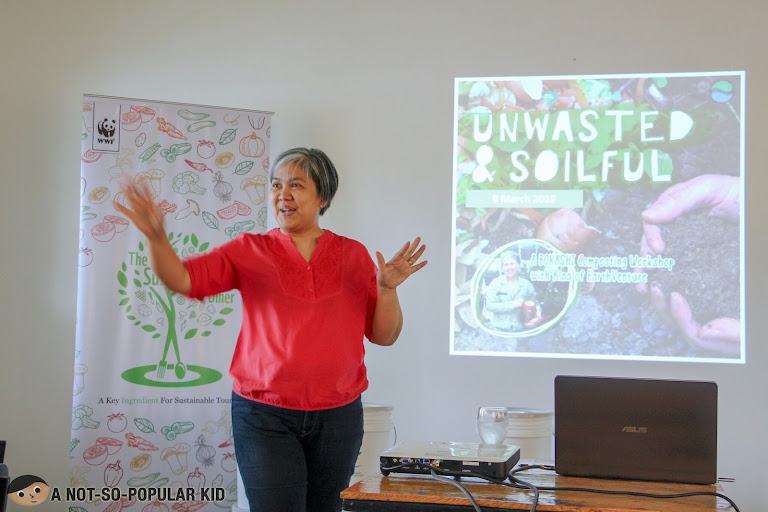How to Do Bokashi Composting in Manila, Philippines
Do you want to participate in saving the Earth through small ways (yet with significant impact)? Composting is the key, and contrary to what you are thinking, you do not necessarily need your own garden (although having own is the better option).
It’s about time that this blog gives back to Mother Earth, and thankfully I was given the opportunity to participate in WWF’s initiatives on reducing food waste (and its ecological impact), and learn more particularly about composting.
While there are numerous methods of composting, this article will just be focusing on Bokashi Composting. This particular way of composting is something I learned through The Sustainable Diner (read more), an event organized by WWF Philippines, and hopefully I can influence you to apply this at your home as well.
How to Do Bokashi Composting?
Let's start off with the things you need in order to begin your Bokashi composting journey.
Things you need:
- Compost Bin (with strainer at the bottom, and preferably with outlet/faucet to extract the compost juice)
- Bokashi Formulation
There are compost bins you can buy online, but you may also make your own by having two buckets. One bucket with holes punctured at the bottom and place on top of another bucket. However, the most important thing is to have an airtight lid to put on top of the bucket. Bokashi composting relies upon the lack of oxygen in order to be successful. Hence, if you'll have trouble with keeping it airtight, I highly suggest that you buy one instead.
Once you have these two, you are all set. That's the beauty of this composting method. It's one of the simplest. Let's now proceed with how to do it.
Procedures:
Once you have these two, you are all set. That's the beauty of this composting method. It's one of the simplest. Let's now proceed with how to do it.
Procedures:
- Collect ALL your SOLID food waste for the day. There are two important things I want to emphasize on this statement. First, I stated “ALL”. Yes, this means we can include meat, fat, bones and etc. Second, I mentioned “SOLID”. Hence, ensure that the waste you collected are dry as possible. Liquids should be avoided.
- Add a thin layer of bokashi on top of the strainer.
- Pour the solid food waste
- Coat the waste with Bokashi
- Seal the composting bin, and make sure it’s airtight as much as possible. Keep in mind that this composting method is anaerobic, which means the less oxygen there is, the more effective the composting process would be
- Repeat until the composting bin is full
- Once full, keep the composting bin sealed for 2 weeks before transferring out the contents for fertilization.
How to use the compost as fertilizer?
- Dig out about 1-foot hole in your backyard or garden
- Take out the contents of the bin and lay them down on the hole
- Cover the hole with soil and allow the compost to further break down for 4 weeks
- You may now use the fertilized soil for planting
My Personal Composting Journey
I applied all of these things for my compost bins, and since our household does not have much food waste. It took me about 2 months to fill the bin. Below are the things I observed throughout the process.
The compost does not smell rotten. While admittedly the smell is indeed potent (a strong forest-like aroma mixed with fermentation), it was far from being rotten. Eventually, you'll get used to the smell. However, there are cases when it may in fact smell a little rotten, but this only happens when you don't drain the bin of its compost juice. This is why having a nozzle is important.
Compost juice is powerful. Once in a while, the compost produces some compost juice no matter how dry your food waste is. This is very much part of the process, since almost all matter is partially made up of water. The good thing about compost juice is it doubles as a fertilizer and a cleaning agent. In my case, I normally pour it in our sink, which helped in de-clogging it.
The compost does not smell rotten. While admittedly the smell is indeed potent (a strong forest-like aroma mixed with fermentation), it was far from being rotten. Eventually, you'll get used to the smell. However, there are cases when it may in fact smell a little rotten, but this only happens when you don't drain the bin of its compost juice. This is why having a nozzle is important.
Compost juice is powerful. Once in a while, the compost produces some compost juice no matter how dry your food waste is. This is very much part of the process, since almost all matter is partially made up of water. The good thing about compost juice is it doubles as a fertilizer and a cleaning agent. In my case, I normally pour it in our sink, which helped in de-clogging it.
If you have questions regarding Bokashi composting, feel free to drop some comments below. I'd be happy to share more about it. After all, this is a way of giving back to mother nature.

















